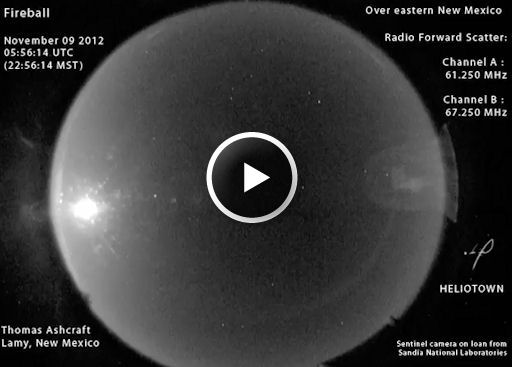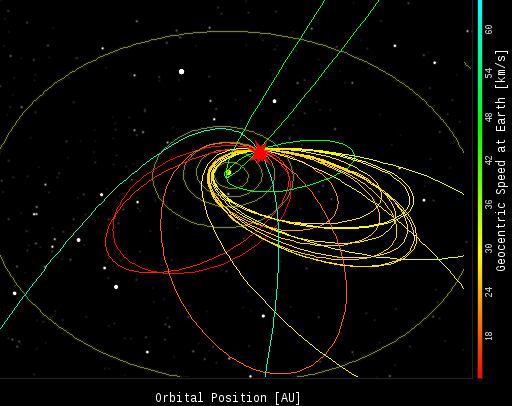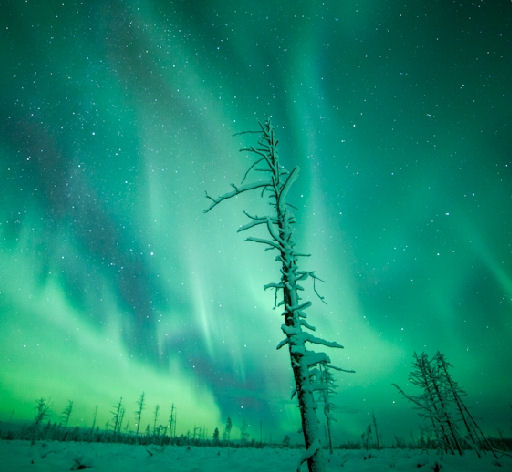Metallic photos of the sun by renowned photographer Greg Piepol bring together the best of art and science. Buy one or a whole set. They make a stellar gift. | | |
TOTAL ECLIPSE OF THE SUN: Scientists and sky watchers are converging on the northeast coast of Australia, near the Great Barrier Reef, for a total eclipse of the sun on Nov. 13/14. For researchers, the brief minutes of totality open a window into some of the deepest mysteries of solar physics. [video] [full story]
TAURID METEOR SHOWER: Earth is passing through a stream of gravelly debris from Comet Encke, source of the annual Taurid meteor shower. Because the debris stream is not very congested, Taurid meteor rates are usually low, around 5 per hour. The special thing about Taurids is that they tend to be fireballs. Amateur astronomer Thomas Ashcraft photographed this Taurid exploding over eastern New Mexico on Nov. 9th:

"It was brighter than the full moon and its brightness penetrated the eyelids of sleepers!" says Ashcraft. The disintegrating meteoroid ionized a column of air that acted as a mirror for radio waves. "The soundtrack of the video is the echo of some distant transmitters I recorded at 61.250 MHz and 67.250 MHz," he explains.
On the night of Nov. 9-10, NASA's network of all-sky fireball cameras recorded 10 Taurids streaking across the southern United States. The orbits of those meteoroids are color-coded yellow in this diagram of the inner solar system:

In the diagram, the location of Earth is denoted by a red splat. Taurids weren't the only meteoroids hitting our planet last night. Red, orange and green orbits correspond to random debris not associated with Comet Encke's debris stream.
Forecasters expect the Taurid fireball shower to peak on the nights around Nov. 12th. Monitor the realtime meteor gallery for the latest sightings.
Realtime Meteor Photo Gallery
[Sky Map] [Listen Up: Live Meteor Radar]
INCOMING CMES: A pair of minor CMEs is heading for Earth. They were launched on Nov. 9th and 10th, respectively, and are expected to merge into a single cloud before they reach our planet on Nov. 12th. NOAA forecasters estimate a 55% chance of polar geomagnetic storms in the next 24 to 48 hours. Aurora alerts: text, voice.
Consider this a preview of the coming display. On Nov. 7th, a minor solar wind stream hit Earth's magnetic field, sparking Northern Lights over Muonio, Finland:

"The whole sky was on fire," says photographer Antti Pietikäinen. "It was one of the best displays of the year in the Finnish Lapland"
Realtime Aurora Photo Gallery
Realtime Space Weather Photo Gallery
Realtime Noctilucent Cloud Photo Gallery
[previous years: 2003, 2004, 2005, 2006, 2007, 2008, 2009, 2011]

